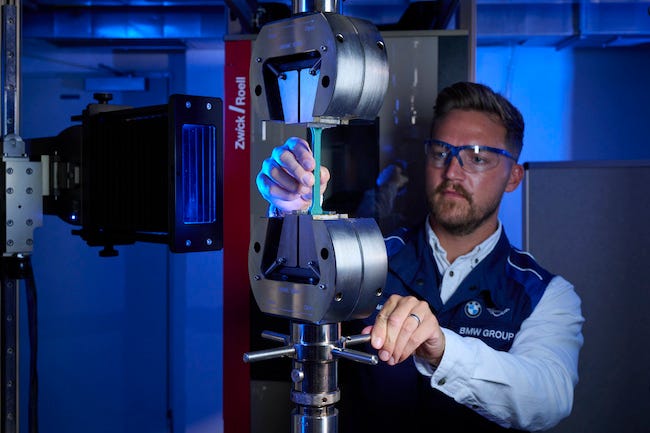Initially deployed in floor mats, a technology co-developed with Plastix will eventually enable production of ocean plastics–based injection molded interior trim.
September 15, 2022

The next series of BMW iX and BMW X1 models due for launch starting in 2025 will not be amphibious but they will feature trim parts made of plastic with around 30% recycled fishing net and rope content. This raw material is proactively sourced at ports all around the world to ensure that it doesn’t end up being discarded in the sea.
The resulting components have an approximately 25% lower carbon footprint than their counterparts made from conventional plastics. The BMW Group is working with different approaches to use plastic waste from the maritime industry as a raw material for vehicle components to conserve valuable resources and reduce CO2 emissions. This form of recycling makes it possible to reduce the need for petroleum-based primary plastics while combating ocean pollution.
Recycled polyamide waste forms the basis for a synthetic yarn used to make the floor mats in the BMW iX and new BMW X1. This material, known as Econyl, is made from discarded fishing nets as well as worn floor coverings and residual waste from plastics production.
|
Ocean plastics traditionally have been confined to fiber applications, but new technology developed by BMW and Plastix will enable their use in injection molded parts such as interior trim. |
In a new initiative developed in cooperation with the Danish company Plastix, the automaker is taking the recycling of maritime plastic waste a step further. After separation, fishing nets and ropes undergo an “innovative process” that produces plastic granules. While recycled maritime plastic has so far only been used in the automotive industry in the form of fibers for new vehicle components, this recycled material is also suitable for injection molding for the first time. The raw material for the components manufactured in this way can consist of around 30% maritime plastic waste.
This creates additional application possibilities for recycled plastics. The components manufactured using the injection molding process are trim parts that will be used in both non-visible and visible areas of the exterior and interior of the new models from 2025. Overall, the BMW Group has set itself the target of increasing the proportion of secondary materials in thermoplastics used in new vehicles from around 20% currently to an average of 40% by 2030.
About the Author(s)
You May Also Like





